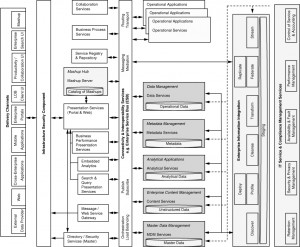- Lying to the boss
- What is a Business Strategy?
- What is a Corporate Strategy?
- What is a Product-Market Strategy?
- What is a Business Unit Strategy?
- What is CRM?
- What is Architecture?
- What is Enterprise Information Architecture?
- What is Strategic Design?
- What are business benefits and value?
- What is DevOps?
- What is Cloud Computing?
- What is a Banking Multi-Channel Architecture?
- What is Gamification?
- What is Crowdsourcing?
- What is a Segment Strategy?
- What is a Business Model?
- What is an Operating Model?
- What is a Target Operating Model (TOM)
- What are Strategic Guiding Principles?
- What is Service Design?
- What is a Customer Archetype?
- What are Digital Natives and Digital Immigrants?
- What is technology-driven change?
- What is a Digital Footprint?
- What is a Potential Trend?
- What are Cloud Standards?
- What is VisaNet?
- What is User Context?
- What are IBM CCRA and CCMP?
- What is PCI DSS Compliance?
 I remember the first time I heard a Nirvana song on the radio. The sound caught me off guard and I thought it was too good to be true!
I remember the first time I heard a Nirvana song on the radio. The sound caught me off guard and I thought it was too good to be true!
That is how I felt when I read The Art of Enterprise Information Architecture.
The book does a good job of explaining Information Architecture and contrasting it to Enterprise Information Architecture.
 The only thing I do better than the authors is forgetting about what I said yesterday and not worrying about trying to make it consistent with what I am saying today. There is some stuff about historical IBM messaging that I would be smarter if I didn’t know.
The only thing I do better than the authors is forgetting about what I said yesterday and not worrying about trying to make it consistent with what I am saying today. There is some stuff about historical IBM messaging that I would be smarter if I didn’t know.
Nonetheless, if you are interested in either Information Architecture or Enterprise Architecture, this is the place to start. Stop what you are doing and read this book.
I give a quick definition of EIA in “What is Architecture?”.
The following primary areas of EIA are shown in the diagram below from the book:
- Data Management
- Metadata Management
- Information Governance
- Enterprise Content Management
- Information Integration
- Master Data Management
- Analytics Applications.
I’ve listed them in the sequence I would consider tackling them in an organization.
All systems have operational data inside them. Beyond accessing the data by an application, Data Management would involve creating data services or some other means to access the data programmatically from outside the application. For example, from a business process or information integration.
Metadata Management puts in place a standard way to document what data exists, where it is stored, how it flows, and where it is consumed.
Once you have started documenting your information landscape you can start Information Governance.
Enterprise Content Management puts some business process around the provisioning of content to be displayed and separates it from applications, similar to how WordPress (used to create this blog) stores content in a database so that you can display it using different themes. This would also be a place to store digitized documents so that they can be shared across the organization.
Information Integration is typically implemented as part of Master Data Management or Analytics. This is where the organization begins to slog through the process of standardizing data and realizes the importance of defining words.
Master Data Management happens as organizations try to synchronize operational data about the most important business entities (customers, products, relationships and locations) across systems.
Analytics involves data warehousing; decision support such as business intelligence (BI); decision management such as business rules management, predictive analytics, decision models, and cognitive computing; and “big data”.

Pingback: What is Architecture? | Alan Street
Pingback: Alan’s Reading List Summary | Alan Street